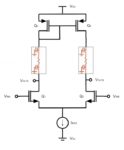Harry Foster opened and wrapped a tutorial at DVCon 2022 on “The Best Verification Strategy You’ve Never Heard Of”. Harry started with a common refrain on verification; we face a crisis thanks to a combination of growing complexity in the systems we are able to design, yet double exponential growth in verification cost for… Read More
Electronic Design Automation
5G and Aircraft Safety: Simulation is Key to Ensuring Passenger Safety – Part 2
In our first blog installment, we outlined the interference concerns surrounding the coexistence of the new C-band 5G telecom service spanning the band from 3.7 to 3.98 GHz with aviation radar altimeters. Radar altimeters are essential components for safety during landing and takeoff, as they offer precise measurements from… Read More
Leveraging Virtual Platforms to Shift-Left Software Development and System Verification
Ever since the cost of development started growing exponentially, engineering teams have been deploying a shift-left strategy to software development and system verification. While this has helped contain cost and accelerated product development schedules, a shift-left strategy is not without challenges. A virtual platform… Read More
5G and Aircraft Safety: Simulation is Key to Ensuring Passenger Safety
The new 5G C-band service is now up and running in the U.S., and subscribers are finally starting to see some of the promise of 5G. The new C-band services are primarily in spectrum allocations between 3 and 4 GHz, providing the wider channel allocation bandwidths necessary to deliver significantly higher data throughput. At the… Read More
Use Existing High Speed Interfaces for Silicon Test
The growth of complexity for silicon test as it relates to test data volume and test times is driven by multiple concurrent factors. One dimension is simply the increase in silicon complexity. However, other factors are playing a role as well. These include higher reliability requirements for new applications such as automotive,… Read More
5G Network Activation Update
As a pilot and semiconductor professional I was a bit shocked to get an Airworthiness Directive due to the 5G rollout. Airworthiness Directives are legally enforceable regulations issued by the FAA to correct an unsafe condition in a product:
“Airworthiness Directive (AD) 2021-23-12 was issued for all fleets in December… Read More
Getting to Faster Closure through AI/ML, DVCon Keynote
Manish Pandey, VP R&D and Fellow at Synopsys, gave the keynote this year. His thesis is that given the relentless growth of system complexity, now amplified by multi-chiplet systems, we must move the verification efficiency needle significantly. In this world we need more than incremental advances in performance. We need… Read More
Webinar: Beyond the Basics of IP-based Digital Design Management
According to the ESD Alliance, the single biggest revenue category in our industry is for semiconductor IP, so the concept of IP reuse is firmly established as a way to get complex products to market more quickly and reducing risk. On the flip side, with hundreds or even thousands of IP blocks in a complex SoC, how does a team, division… Read More
Prototype enables new synergy – how Artosyn helps their customers succeed
Artosyn Microelectronics, a leading provider of AI SoCs for drones and other sophisticated applications finds itself at the intersection of hardware architecture and software development. “Our customers are advancing the state of AI programming every day,” said Shen Sha, Senior R&D Manager of Artosyn’s AI Chip Department.… Read More
Analog IC Layout Automation Benefits
I viewed a recent webinar from Paul Clewes of Pulsic, and the topic was Balancing Analog Layout Parasitics in MOSFET Differential Pairs. This topic interests me, because back in 1982 I wrote my first IC layout automation tool at Intel that automatically created 15% of a GPU chip layout called the 82786, then joined Silicon Compilers… Read More











Quantum Computing Technologies and Challenges